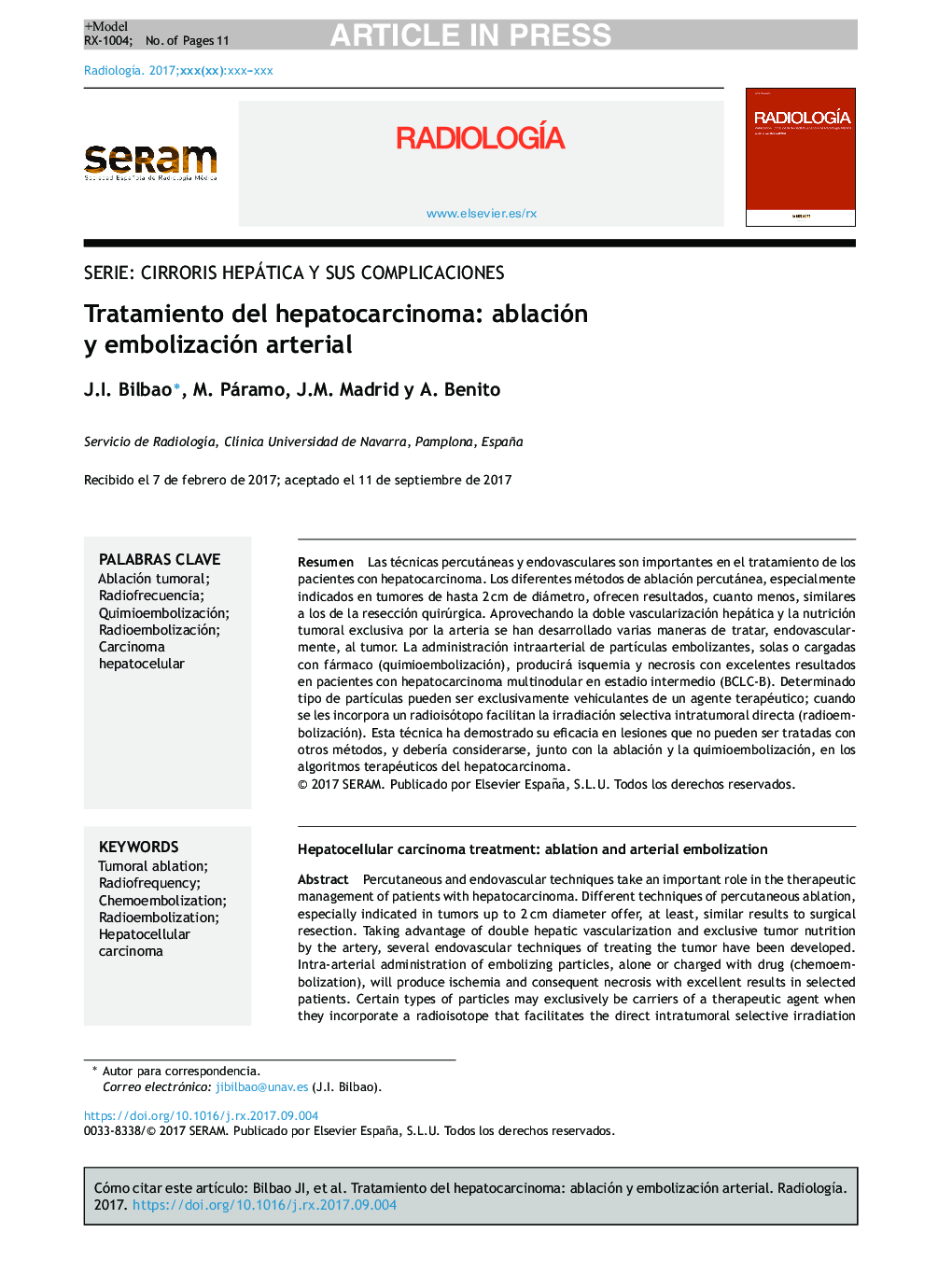| Article ID | Journal | Published Year | Pages | File Type |
|---|---|---|---|---|
| 8824717 | Radiología | 2018 | 11 Pages |
Abstract
Percutaneous and endovascular techniques take an important role in the therapeutic management of patients with hepatocarcinoma. Different techniques of percutaneous ablation, especially indicated in tumors up to 2Â cm diameter offer, at least, similar results to surgical resection. Taking advantage of double hepatic vascularization and exclusive tumor nutrition by the artery, several endovascular techniques of treating the tumor have been developed. Intra-arterial administration of embolizing particles, alone or charged with drug (chemoembolization), will produce ischemia and consequent necrosis with excellent results in selected patients. Certain types of particles may exclusively be carriers of a therapeutic agent when they incorporate a radioisotope that facilitates the direct intratumoral selective irradiation (radioembolization). This technique has demonstrated its efficacy in lesions not susceptible to be treated with other methods and should be considered, together with ablation and chemoembolization, in the therapeutic algorithms of hepatocarcinoma.
Keywords
Related Topics
Health Sciences
Medicine and Dentistry
Radiology and Imaging
Authors
J.I. Bilbao, M. Páramo, J.M. Madrid, A. Benito,
